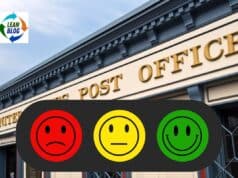 I'd read before that Apple's supplier (Foxconn) was having trouble assembling iPhone 5s to Apple's standards… but this article contains some shocking stats: “Apple Returns Millions of Defective iPhone 5 Smartphones.”
I'd read before that Apple's supplier (Foxconn) was having trouble assembling iPhone 5s to Apple's standards… but this article contains some shocking stats: “Apple Returns Millions of Defective iPhone 5 Smartphones.”
Millions… 5 to 8 million defective phones returned. Foxconn has only been able to achieve an 80% quality rating… suggesting 2 in 10 have some sort of problem. What were Apple's expectations? Shockingly low.
The agreement between Apple and its outsourced manufacturer allegedly states that a 90 percent quality rate is required (meaning only 1 out of 10 iPhones are allowed to be broken).
I'm pretty shocked that Apple expected (or allowed) a 10% defect rate.
The bad working conditions at Foxconn have been well documented (including this previous blog post of mine).
This goes to show there are multiple definitions of quality, including:
Fitness for use: Does the product, as designed, meet the customer's needs?
Lack of defects: Not having physical problems or electrical problems
This is a VERY high defect rate for manufacturing. That's hardly a six sigma quality level.
Having to take back the defective product add costs and hurts profit margins for Foxconn.
Please scroll down (or click) to post a comment. Connect with me on LinkedIn.
Let’s build a culture of continuous improvement and psychological safety—together. If you're a leader aiming for lasting change (not just more projects), I help organizations:
- Engage people at all levels in sustainable improvement
- Shift from fear of mistakes to learning from them
- Apply Lean thinking in practical, people-centered ways
Interested in coaching or a keynote talk? Let’s talk.
Join me for a Lean Healthcare Accelerator Trip to Japan! Learn More










Hi Mark
A 10% defect rate must be why Apple products cost so much extra, it is fortunate for them they are so cutting edge, if they weren’t they would have been out of business years ago with such poor quality.
But I guess poor quality goes hand in hand with there just get it to market mindset. Quality production requires some time and effort to set up.
Yeah, it’s a good thing they can charge a premium for their products (an iPad mini is $100 than a Kindle Fire). Apple might be fooling themselves that the cost of poor quality is stuck on their suppliers, but it ultimately flows through to them.
[…] Apple Expected 10% Bad iPhones from Foxconn? Mark Graban’s Lean Blog, May 6, […]
Comments are closed.